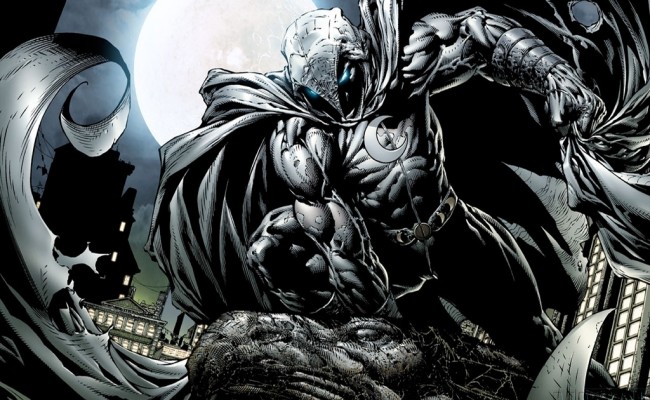As the superheroes that commanded so much of the market during the late 1930s- late 40s lost their appeal to readers, comic book publishers shifted their focus toward other genres. Romance, westerns, science fiction, crime and horror all rose up to supplant the superheroes as sales leaders.
The comics, which had seen record sales, especially during World War II, became an easy target for crusaders of the political right and left, and those same readers who enjoyed consuming stories of Superman, Batman, and Captain Marvel suddenly came to realize that they’d narrowly avoided being nefariously influenced to commit the extreme acts of violence and sodomy portrayed within their pages. They also realized that their own children might not be so lucky.
At the forefront of the crusade against the comics’ despicable influence was a venal glory hound called Frederic Wertham. In 1953, Wertham published a hilariously ill-written, alarmist, and dishonest book called Seduction of the Innocent, in which he claimed the juvenile delinquents with whom he supposedly worked, and with whom he’d supposedly spoken, were avid comics readers, inspired to commit criminal acts by the lurid images and stories they read in comics.
Wertham’s book has long been considered a failure as scholarship. But as it turns out, new evidence has just emerged that shows that Wertham wasn’t just a sloppy researcher who mangled the interpretation of his work to prove his own hypothesis: He was a fundamentally dishonest charlatan who lied about his research:
Wertham’s personal archives, however, show that the doctor revised children’s ages, distorted their quotes, omitted other causal factors and in general “played fast and loose with the data he gathered on comics,” according to an article by Carol Tilley, published in a recent issue of Information and Culture: A Journal of History.
“Lots of people have suspected for years that Wertham fudged his so-called clinical evidence in arguing against comics, but there’s been no proof,” Tilley said. “My research is the first definitive indication that he misrepresented and altered children’s own words about comics.”
In the interest of equal time, here’s Michael Chabon, author of the novel The Amazing Adventures of Kavalier & Clay, on Wertham:
“No one who does even the most rudimentary research into Wertham’s career and accomplishments can fail to admire him for his compassion, his intelligence, his desire to help children, and his fairly snappy prose style…. [but] It was Wertham’s boneheaded inferences about the direct causal connection between…comics and ‘deviance’ in children, [and] the hysteria his inferences helped to foster (along with a counter-hysteria among comics fans) that have tarnished his admirable legacy.”
(That quote was taken from this website, which is where I got the hilarious photo of Wertham “reading” a comic book.) The problem with Wertham is that, as we now know, it wasn’t just that he made “boneheaded inferences.” It’s that he flat-out lied about his work. His entire character– his so-called “compassion” and “intelligence” and “desire to help children”– are called into question.
Wertham’s underhanded book, coupled with the compassionate and intelligent reputation to which Chabon alluded, made him into the perfect expert witness for the 1954 Senate hearings which investigated the alleged link between juvenile delinquency and comic books. Those hearings had a devastating effect on the comic book industry, leading to the creation of the Comics Code Authority, a censoring board which enforced rules that limited the material publishers could release.
This sorry era in comics history serves as the backdrop for Max Allan Collins‘s newest crime novel, which is itself titled Seduction of the Innocent. The novel’s protagonist, Jack Starr, is the vice president of the Starr Syndicate, which syndicates comic strips and columns to newspapers. His primary responsibility is as a “trouble-shooter,” investigating lawsuits against the syndicate, or “when a cartoonist or columnist gets in a jam.” This work requires Starr have a private investigator’s license. It also, happily, requires that he be a classic hard-boiled narrator in the tradition of Chandler, Hammett, and Spillane.
As the novel begins, Dr. Werner Frederick’s anti-comics “screed,” Ravage the Lambs, is about to be published. Starr syndicate, which is about to distribute a Sunday comic strip based on a comic published by one of the more notorious publishers cited in Frederick’s book, wants to hire him to write a “Dear Abby” type advice column, but with a psychiatric twist. The syndicate’s president, former showgirl Maggie Starr, hopes to use the potential column as a way to defuse Frederick’s comic book criticism by signing him to a contract that would prohibit him mentioning comics or his anti-comics work in that column. Frederick lets his ego get in the way of whatever integrity he might have had, and agrees to the conditions.
But when Frederick turns up dead, Starr syndicate’s shrewd business move turns into a potential liability, and Jack Starr has to put his investigator’s license– and his hard boiled narration– to use.
“I gestured to the corpse, which made a handy visual aid.”
“What a big, plush woman like this was doing with a squirt like Pine, I couldn’t imagine.”
“He had the diction of Demosthenes before he spit the pebbles out.”
“Everything was going just hunky-dory till I passed out in the elevator.”
The venal Dr. Frederick is obviously based on Wertham. In fact, Jack Starr’s assessment of the character is remarkably similar in tone to Chabon’s assessment of the man:
“Look, he does do some good work. He works pro bono with poor kids at a Harlem clinic, for example. He testified recently at that Brown versus Board of Education thing, talking about the negative impact segregation has on Negro youths. He’s not all bad. But he’s dangerous.”
This point is illustrated in chapter five, when Jack and Sylvia Winters, who is hired to ghost write Dr. Frederick’s proposed column, take a trip to Harlem to visit Dr. Frederick’s free clinic. Collins does a good job of balancing the doctor’s “good” and “bad” sides, presenting a surprisingly nuanced portrait of a man who really is not all bad, but dangerous. Unlike the real Dr. Wertham, there’s no evidence that Dr. Frederick “fudged” his research, but the novel does feature a twist that pays an indirect homage to Carol Tilley’s new research.
Dr. Frederick doesn’t get his until the sixth chapter, so Collins gives himself enough space to fully establish the milieu. There’s the Congressional hearings, death threats against Dr. Frederick and the creators of the comics, and a lot about the mechanics of the comic book business at the time, complete with organized crime connections that perhaps should have been the real focus of any investigation into the industry. In addition to the Wertham-inspired Dr. Werner Frederick, Collins also gives the reader plenty of potential suspects, many of whom are (very) loosely based on actual creators and publishers from the era, including Bill Gaines and Al Feldstein, Charles Biro and Tarpe Mills. The book’s “EC style” illustrations by Collins’s frequent collaborator, Terry Beatty (I particularly recommend their Johnny Dynamite book Underworld) contribute to the comic book inspired ambiance, while Glen Orbik’s painted cover recalls the pulp crime novels of the 1950s.
Collins is a talented and prolific writer, and Seduction of the Innocent works exceptionally well as an examination and commentary on the anti-comics crusade of the early 1950s, and as a hardboiled mystery novel. Anyone with interest in either comics history or crime novels should give it a look.
Disclosure: My copy of Seduction of the Innocent was a review copy provided by the publisher.
















S#!T Talking Central